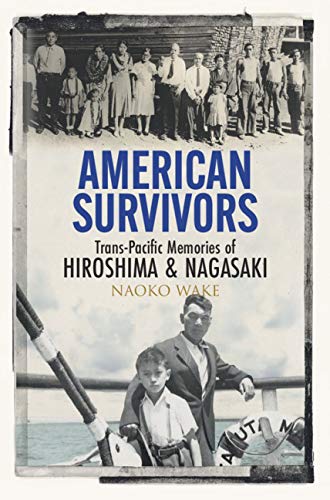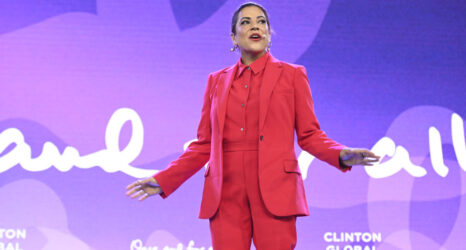Today the U.S. government still does not recognize its own citizens as casualties of the atomic bombings of Hiroshima and Nagasaki.

For many Americans, the atomic bombings of Hiroshima and Nagasaki at the end of World War II were a consequence of the war the U.S. fought against the then-enemy country of Japan. For a number of Asian Americans, however, the U.S. decision to drop the bombs remains a hidden history of the war that tore up families and communities built across the Pacific since the late 19th century.
The bomb destroyed Asian American lives, and not only in the immediate sense. With most of their family members in the U.S. incarcerated in Japanese American camps during the war, and a rigid racial hierarchy shaping most Cold War policies, Asian American survivors were forced into a prolonged silence about their experiences of being injured by their own government.
Mary Kazue Suyeishi was uncompromising when it came to her quest to have the U.S. government recognize U.S. survivors of Hiroshima and Nagasaki. Witnessing her tireless efforts throughout the 1970s, Julie Kumi Fukuda—another of the few thousand Asian Americans who had been in either of the Japanese cities in August 1945—said about Suyeishi: “If anything at all comes [out] of Congress, it’ll be because she’s worked so hard. Some of the men think she’s too much … But nobody’s going to do” what Suyeishi was doing—fighting the uphill battle for the rights of Asian American survivors. Their goal was to have the U.S. government subsidize the treatment of radiation illness, the high cost of which was pushing some Asian American survivors to financial ruins.
These “forgotten” survivors, especially women like Suyeishi and Fukuda, began to break their silence in the late 1960s and early 1970s. Amid the rising civil rights activism bringing together people of color and their white allies, women survivors became a strong voice for Asian America’s suffering. This expanded beyond what happened at Ground Zero in 1945. The U.S. medical system and its discrimination against the Asian American community caused significant suffering. The community couldn’t access facilities to treat radiation illness or ones attending to tuberculosis or lead poisoning, conditions that occurred frequently among those of lower socioeconomic status.
U.S. survivors also dealt with cultural barriers that disproportionately affected immigrant communities. Recognizing psychosocial, as well as physical, ailments, Asian American survivors in California sought to build an alliance with a community mental health clinic in Los Angeles, which they hoped would offer counseling services in multiple Asian languages on a sliding fee scale. Although this particular effort was unsuccessful, it helped shape their personal and collective identities as survivors.
For Asian American survivors, two-thirds of whom are women, engaging in these community-based activisms meant pushing gender boundaries. When we think about the civil rights activism of half a century ago, we often think about younger Americans who stood at the forefront of marches and demonstrations. The dominant image of activists still tends to be male.
But older American women like Suyeishi and Fukuda, too, led activism, albeit in quieter, less visible, ways. As Fukuda said about Suyeishi, women who took leadership roles often drew ire from men of the community. But when the day came for a congressional hearing about a bill supporting U.S. survivors, it was none other than Suyeishi who ensured the hearing had a large enough audience. She did so by organizing a bus that went back-and-forth (like a “piston,” she said) between downtown Los Angeles and the building holding the hearing. She targeted retirees as she knew they had more time than younger folks. Thanks to her efforts, the courtroom was packed with older Asian Americans.
As an Asian American woman, I am moved by women like Suyeishi, who begun difficult conversations about the bomb within families and communities. Married to a former incarceree of a wartime Japanese American camp, Suyeishi found a way to talk about her trauma caused by the bomb in a way that did not devalue her husband’s suffering inflicted by the camp. Their efforts opened the door for not only Japanese Americans, but also Korean Americans affected by the bomb to join U.S. survivors’ activism. Working across ethnic lines, they also garnered support from a broad range of politicians of color. Japanese American members of Congress such as Patsy T. Mink, Norman Mineta and Daniel Inouye backed U.S. survivors’ efforts. But so did politicians like Bill Greene, a former freedom rider at the height of the Black civil rights movement, and Edward Roybal who was the first Latino member of Congress from California in the 20th century. Our understanding of the civil rights movement can include many more stories that reveal inter-ethnic and -racial coalitions.

As we consider what America represents, we should also remember these Asian American stories as part of Hiroshima and Nagasaki. When Suyeishi passed away in 2017 at 90, she was still the president of the American Society of Hiroshima Nagasaki A-Bomb Survivors. She had actively engaged in peace education until her death. Hers is a deep dedication worthy of much praise.
And yet, we should also remember that today the U.S. government still does not recognize its own citizens as casualties of the bomb. Nor do many of us know about their histories shaped by silence, invisibility and persistent devaluing of people of color, especially women.
The history of Hiroshima and Nagasaki is about America as much as it is about nations engulfed in a world war. More than three-quarters of a century after the bomb, we can choose to remember the nearly forgotten history of Asian America as part of who we are.
Up next:





